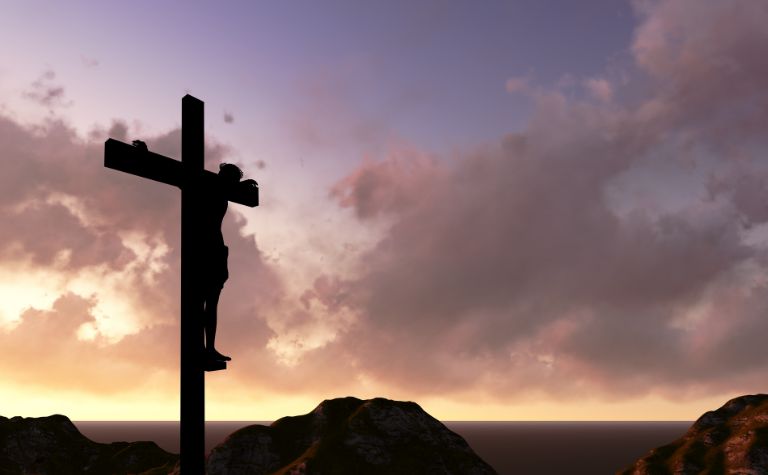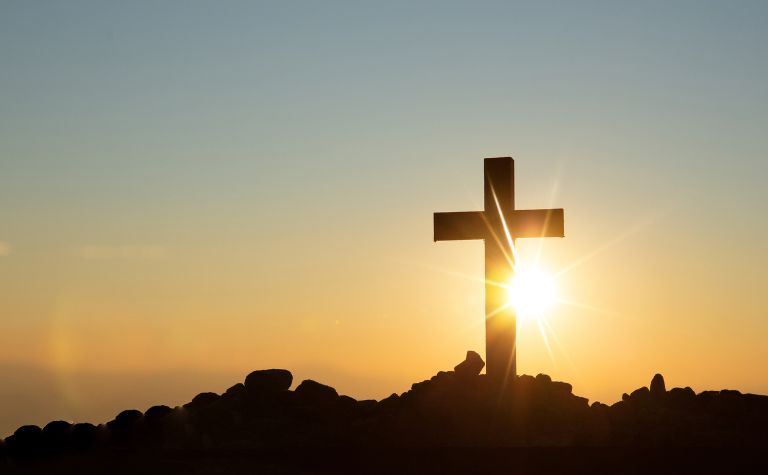The crucifixion and resurrection of Jesus Christ are the climactic events of the four Gospels, Matthew, Mark, Luke, and John. The Gospel writers record the event of the crucifixion in great detail, including the time of day that Jesus was placed on the cross and when he took his last breath. These details help reveal what time Jesus actually died.
Jesus Christ died on the cross at 3:00pm. According to the Gospel of Mark, it was the “ninth hour” when Jesus took his last breath. Mark used the Jewish method of counting hours, so he reports that Jesus was crucified at the third hour, 9:00am, and died at the ninth hour, 3:00pm.
How do scholars solve the alleged discrepancy between Mark and John regarding when Jesus was placed on the cross? How does this affect the time of Jesus’ death? What is the majority view among scholars on this issue? What are other suggested solutions to the problem? Keep reading to learn the answers to these questions and others.
Also see Why Was Jesus Christ Crucified? to learn more.

What was the hour of Jesus’ crucifixion?
Mark mentions the hour that Jesus was placed on the cross and John doesn’t. However, John specifies the hour that Pilate presented Jesus — who was obviously still alive at that point — to the Jews and said, “Behold your King!”
The basis for the alleged discrepancy is that John reports that Pilate presented Jesus to the crowd after Mark says he was already on the cross. For many scholars, the solution to the problem lies in knowing that Mark and John numbered days and hours differently. (See the verses below the comparison table.)
| Mark 15:25 | John 19:14 |
|---|---|
| Mark says Jesus was placed on the cross in the third hour of the day (see verse below the table) | John says Jesus was on trial at the sixth hour of the day (see verse below the table) |
| Alleged problem: Mark says Jesus was placed on the cross before John says he was tried | Alleged problem: John says Jesus was tried after Mark says he was placed on the cross |
| Explanation: Mark uses Jewish time to count daylight hours | Explanation: John uses Roman time to count daylight hours |
| According to Jewish time, a day began at 6:00am | According to Roman time, a day began at 12:00am midnight |
| Solution: Jesus was placed on the cross at 9:00am | Solution: Jesus was on trial at 6:00am |
| Mark doesn’t disagree with John; Jesus was placed on the cross three hours after he was tried | John doesn’t disagree with Mark; Jesus was tried three hours before he was placed on the cross |
John 19:14b: The Time of Jesus’ Trial
- “Now it was the day of Preparation of the Passover. It was about the sixth hour. He said to the Jews, ‘Behold your King!'” (ESV)
- “And it was the preparation of the passover, and about the sixth hour: and he saith unto the Jews, Behold your King!” (KJV)
- “Now it was the day of preparation for the Passover; it was about the sixth hour. And he said to the Jews, “Behold, your King!” (NASB)
- “It was the day of Preparation of the Passover; it was about noon. “Here is your king,” Pilate said to the Jews.” (NIV)
- “It was now about noon on the day of preparation for the Passover. And Pilate said to the people, “Look, here is your king!” (NLT)
Mark 15:25: The Time That Jesus Was Placed on the Cross
- “And it was the third hour when they crucified him” (ESV)
- “And it was the third hour, and they crucified him.” (KJV)
- “It was the third hour when they crucified Him.” (NASB)
- “It was nine in the morning when they crucified him.” (NIV)
- “It was nine o’clock in the morning when they crucified him.” (NLT)
Mark 15:33: The Time of Jesus’ Death
- “And when the sixth hour had come, there was darkness over the whole land until the ninth hour.” (ESV); cf. Jesus “breathed his last” (v. 37)
- “And when the sixth hour was come, there was darkness over the whole land until the ninth hour.” (KJV)
- “When the sixth hour came, darkness fell over the whole land until the ninth hour.” (NASB)
- “At noon, darkness came over the whole land until three in the afternoon.” (NIV)
- “At noon, darkness fell across the whole land until three o’clock.” (NLT)
Because Mark and John don’t disagree, but only count daylight hours differently, there is no discrepancy with regard to what time Jesus died on the cross. Mark correctly records when Jesus was hung on the cross as well as what time he died.
Also see Where Was Jesus Christ Crucified? to learn more.

How did Romans count hours?
Matthew and Luke follow Mark and state that Jesus was placed on the cross at the third hour on Friday morning. These three Gospels have many similarities, so it’s not surprising that they are in agreement on this detail.
Many Christians are familiar with how Jews numbered days and hours because of subjects like the Sabbath, which are prevalent throughout the Bible. Roman time is less familiar to many Bible readers and leads to questions about how it’s calculated and why John uses it.
Understanding Roman days
As the table above indicates, Romans considered days to start at midnight. References to Roman time can be found in non-biblical literature and verifies how people counted days and hours.
For example, the Roman historian, Marcobius Ambrosius Theodosius, writes “a day, which the Romans have declared to begin at the sixth hour of the night.” [1] Sunset, generally considered to be 6:00pm began the night. Therefore, the sixth hour of the night was midnight.
Pliny the Elder also referred to Roman time-keeping when he wrote, “The day itself has been differently observed in different countries: by the Babylonians between two sunrises; by the Athenians between two sunsets; by the Umbrians from noon to noon; by the Roman priests and those who have defined the civil day, as the Egyptians also and Hipparchus, from midnight to midnight.” [2]
According to Merriam-Webster’s Dictionary, a civil day is “a day adopted for time reckoning in civil affairs; usually: the mean solar day of 24 hours beginning at mean midnight.” [3]
Also see How Long Was Christ On the Cross? to learn more.

Why did John use Roman time instead of Jewish time?
Wouldn’t it make more sense for John to use Jewish time like the other Gospels? Many people ask this question because it would have resulted in greater consistency in reporting the chronology of Jesus’ life and death. It would also cohere with the Jewish worldview that is evident in the Gospels.
However one solves the alleged problem between Mark and John, the issue of why the latter uses Roman time instead of Jewish time needs its own resolution. Most scholars believe the answer lies in knowing more about where John writes his Gospel.
Scholars are in general agreement that John wrote his Gospel from Ephesus, which was the capital of the Roman province, Asia. Days and hours in Ephesus were numbered according to Roman time.
Importantly, John’s first readers may have been those he was serving with and ministering to in Ephesus. Telling stories in Roman time may have helped those he was with to understand Jesus’ crucifixion.
There are other examples in John’s Gospel of him using Roman time. In these passages, John refers to days ending at midnight, not sunset like in Jewish time.
- John 12:1, “Six days before the Passover, Jesus therefore came to Bethany, where Lazarus was, whom Jesus had raised from the dead.”
- John 20:19, “On the evening of that day, the first day of the week, the doors being locked where the disciples were for fear of the Jews, Jesus came and stood among them and said to them, ‘Peace be with you.'”
Other solutions to Mark and John’s time difference
Other viewpoints, which reputable Bible scholars hold, include the perspective that Mark and John approximated time; that a copyist made an error; and that John purposefully changed the time for theological reasons.
John’s time was approximate
Some scholars argue that in the first-century people estimated time to the nearest third hour. Therefore, the difference between 9:00am and noon is negligible.
Mark 15:25 contains a precise description: “it was the third hour” (ESV). But John 19:14 contains an approximate time: “it was about the sixth hour” (emphasis added, ESV). [4]
D.A. Carson suggests a similar interpretation: “More than likely we are in danger of insisting on a degree of precision in both Mark and John, which, in days before watches, could not have been achieved. The reckoning of time for most people, who could not have very well carry sundials and astronomical charts, was necessarily approximate.”
Carson continues: “If the sun was moving toward mid-heaven, two different observers might well have glanced up and decided, respectively, that it was the ‘third hour’ or the ‘sixth hour.'” [5]
Also see How Many Lashes Did Jesus Receive? to learn more.
A copyist of John’s Gospel made an error
Another view argues that a copyist made an error, changing a 3 to a 6 in John’s Gospel. Eusebius is an example of a historian who holds this view.
It’s unclear how this solves the alleged problem because Mark and John are referring to two different moments: Jesus’ death and Pilate’s announcement. It may, in fact, create a new problem in saying that both of those moments occurred simultaneously.
John purposefully changed the time for theological reasons
Some believe John purposefully changed the time to align with when Jews slaughtered lambs for Passover. In this view, John intends to present Jesus as the ultimate sacrificial lamb.
This view may create a new problem concerning John’s customized method of counting hours. It also necessitates Jesus dying on Thursday instead of Friday, which isn’t the majority view.
References:
[1] Saturnalia. 1.3
[2] Natural History. 2.77.
[3] Source
[4] Andreas Kostenberger is an example of a scholar who makes this argument (John, BECNT).
[5] The Gospel According to John by D.A. Carson. p. 605.
Source
Related Questions
"We should understand that, fundamentally, our faith is not about what we do (as important as that is), nor is it about what we think (as important as that is). Our faith is fundamentally...
The word "gospel" is a common New Testament term that Christians also use frequently today. Phrases like "the gospel of Jesus Christ," "preach the gospel," and "spread the gospel" are frequently...
